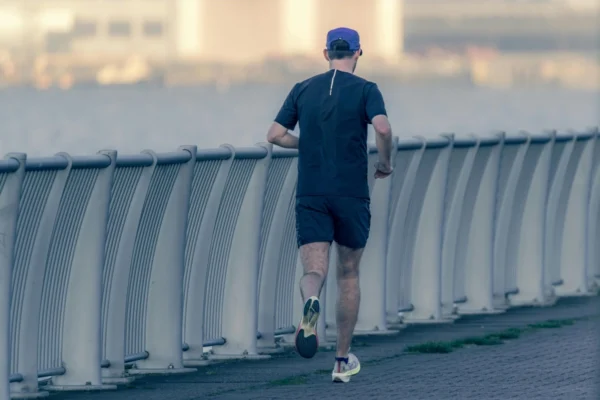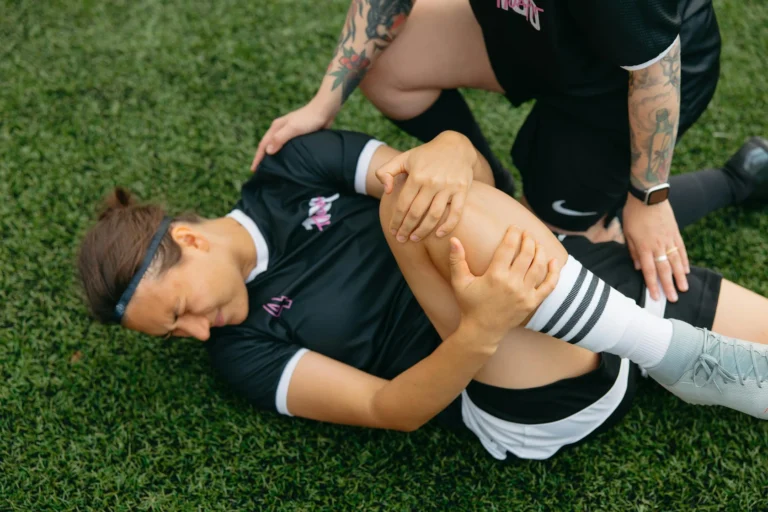Accredited Exercise Physiologists in Melbourne

Running Gait Analysis: How Your Running Form Affects Injury Risk and Performance
Watch any local fun run and you’ll notice something interesting – some runners glide along effortlessly while others lumber past, seemingly fighting against their own bodies. The difference often comes down to one thing: running mechanics.
As exercise physiologists in Melbourne, we’ve seen countless runners transform their performance and slash their injury risk through proper running gait analysis. If you’ve been battling recurring injuries or wondering why other runners seem to recover faster, your running form might be the missing piece of the puzzle.
What Is Running Gait Analysis?
Running gait analysis is the systematic assessment of how your body moves during running. It’s not just about whether you heel strike or forefoot strike – we’re looking at the entire kinetic chain from your head position down to how your foot contacts the ground.
Through comprehensive running gait analysis, an exercise physiologist in Melbourne can identify biomechanical inefficiencies that waste energy, movement patterns that increase injury risk, asymmetries between left and right sides, and areas requiring targeted strength or mobility work.
Common Running Injuries We Can Prevent
Running gait analysis helps us understand why you might be experiencing:
Knee Pain and Patellofemoral Issues
When your hips don’t stabilise properly during running, your knees pay the price. Gait analysis reveals hip weakness and poor tracking patterns causing chronic knee pain.
IT Band Syndrome
That sharp pain on the outside of your knee often stems from poor hip mechanics and excessive knee valgus during the stance phase.
Plantar Fasciitis
Excessive pronation, collapsed arches, or poor foot strike patterns can lead to debilitating heel pain. Through exercise physiology assessment, we identify the mechanical causes rather than just treating symptoms.
Shin Splints and Stress Fractures
Overstriding and excessive impact forces from poor landing mechanics are primary culprits. Gait analysis reveals these high-impact patterns before they sideline your training.
Common Gait Issues We See in Runners
Through years of conducting running gait analysis Melbourne sessions, we’ve identified patterns that consistently show up:
The Overstrider
Landing with your foot well in front of your centre of mass creates enormous braking forces. Each step literally slows you down while increasing impact stress. The fix? Cadence work (typically increasing to 170-180 steps per minute) and forward lean drills.
The Hip Drop Pattern
When your stance leg’s hip drops during running, your knee dives inward, your ankle rolls in, and your foot over-pronates. This dramatically increases injury risk. We address this through hip abductor strengthening and single-leg stability work.
The Quad-Dominant Runner
Many runners operate almost entirely with their quads, barely activating their glutes and hamstrings. This creates anterior knee pain and hamstring injury risk. Posterior chain strengthening and glute activation drills correct this pattern.
The Collapsed Arch Runner
Excessive pronation during stance phase contributes to everything from plantar fasciitis to knee pain. Foot strengthening exercises and appropriate footwear assessment address this issue.
How Running Gait Analysis Improves Performance
Running gait analysis isn’t just about preventing injury – the performance benefits are equally impressive. Efficient mechanics mean more power translates to forward motion rather than being lost to poor form. We’ve seen runners drop significant time off their race pace just by improving running mechanics.
Better efficiency means less energy wasted. When you’re running a half or full marathon, those energy savings compound dramatically over the distance. You’ll be stronger in the final kilometres when it counts most. Understanding your body and how it moves gives you confidence to push harder in training and racing.
Our Running Gait Analysis Process
When you book running gait analysis with our exercise physiology Melbourne team, here’s what to expect:
Comprehensive Assessment
We gather information about your running history, injury history, and performance goals. We assess your basic movement patterns through functional tests and examine your standing posture for asymmetries.
Video Analysis
You’ll run on our treadmill while we capture high-speed video from multiple angles. Slow-motion replay reveals movement patterns invisible to the naked eye. This is where exercise physiologists spot the subtle inefficiencies that compound over thousands of steps.
Strength and Mobility Testing
We test the physical qualities that underpin good running mechanics. Weak glutes? Tight hip flexors? Poor ankle mobility? We find it and address it.
Personalised Action Plan
You receive a detailed report with video stills, key findings, and most importantly, a clear roadmap: specific exercises, technique cues, and progressions tailored to your needs and running goals.
The Exercise Physiology Approach to Correction
Here’s where exercise physiology services differ from a quick video analysis. We don’t just identify problems – we create comprehensive solutions through a phased approach.
First, we build the physical capacity to support better mechanics through targeted strength training, mobility work, and motor control exercises. Then we introduce running technique modifications gradually with careful monitoring. Finally, we integrate your improved mechanics into your actual training – whether that’s tempo runs, intervals, or long slow distance work.
This systematic approach typically takes 8-12 weeks for lasting change as your nervous system adapts to new movement patterns.
Real Results from Running Gait Analysis
We’ve worked with runners across all levels who’ve experienced dramatic improvements:
A 42-year-old runner dealing with chronic knee pain for over a year was limited to short, slow runs. Her gait analysis revealed significant hip drop and knee valgus. After 8 weeks of targeted hip strengthening and gait retraining, she was pain-free and back to regular training volume.
A 35-year-old half-marathon runner couldn’t break the 1:45 barrier despite consistent training. Gait analysis showed he was overstriding significantly. By increasing his cadence and improving his forward lean, he ran 1:41 at his next race.
Common Questions About Running Gait Analysis
“Will you change everything about how I run?” No. We make targeted modifications based on your specific issues. Sometimes subtle adjustments have profound impacts.
“I’ve been running the same way my whole life. Can I really change?” Absolutely. Your nervous system is remarkably adaptable. With proper guidance from an exercise physiologist, gait retraining is achievable at any age.
“Is this just for injured runners?” Not at all. Running gait analysis is valuable for injury prevention and performance enhancement, even if you’re currently healthy. Why wait for injury to optimise your mechanics?
The Investment in Your Running Future
At our clinic, comprehensive running gait analysis packages start around $150-200 for initial assessment, with follow-up sessions at standard rates. We also offer semi-private training options where you can work through your corrective program in our facility with occasional guidance, making ongoing care more affordable at $50-100 per fortnight.
Compare this to ongoing physiotherapy for chronic injuries, lost training time, or the frustration of not reaching your running potential.
Your Next Step: Book Your Assessment
If you’re a runner in Melbourne dealing with recurring injuries, unexplained pain, or feeling like you’re not reaching your potential, running gait analysis might be exactly what you need.
Our St Kilda clinic offers assessment times for runners ready to move better, perform better, and stay healthy.
Here’s what’s included:
- 60-75 minute comprehensive assessment
- Multi-angle video analysis
- Strength and mobility testing
- Detailed written report with video stills
- Personalised correction program
Don’t wait for injury to force the issue. Be proactive about your movement quality and injury risk. Get in touch.
Searching for an exercise physiologist near you who specialises in running gait analysis? Our exercise physiologists in Melbourne combine advanced technology with exercise physiology expertise to help runners of all levels move efficiently and stay injury-free.

